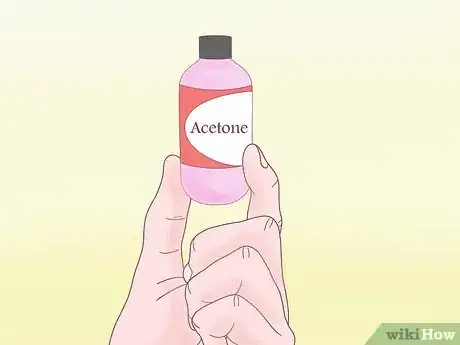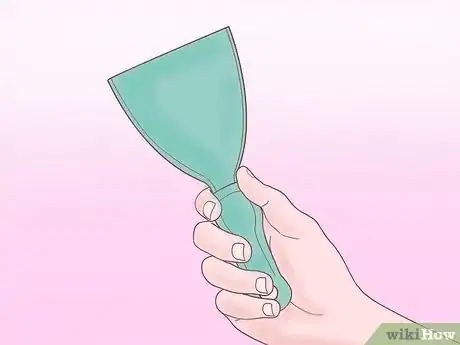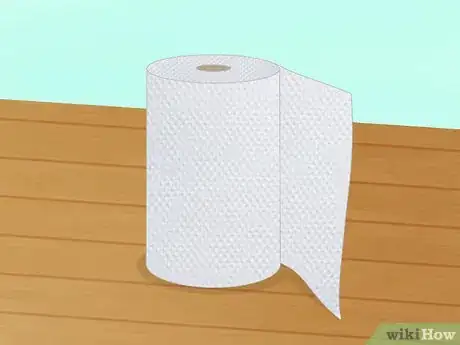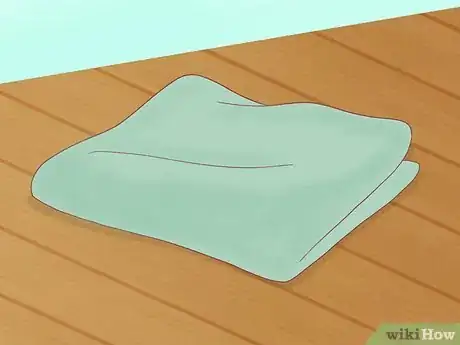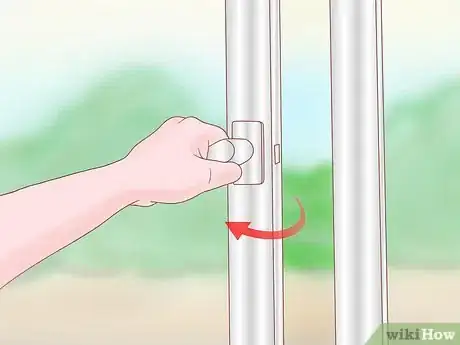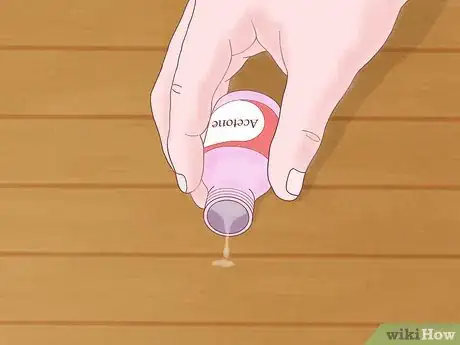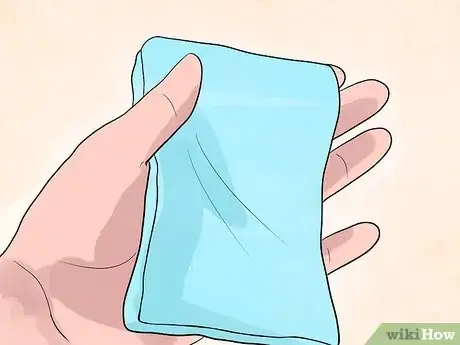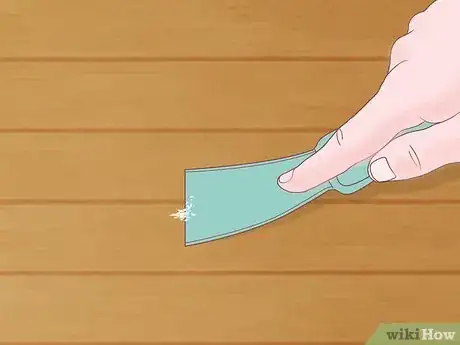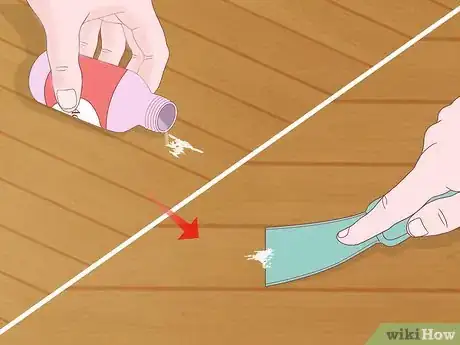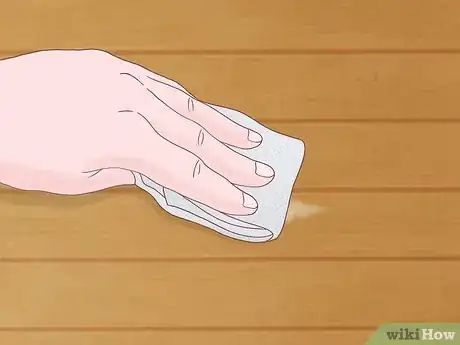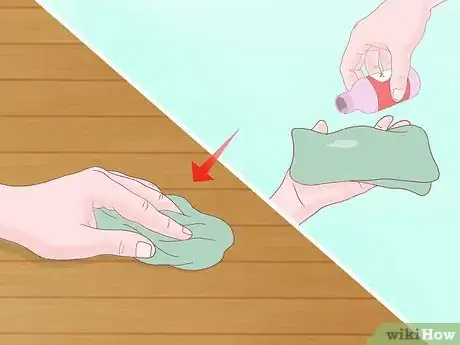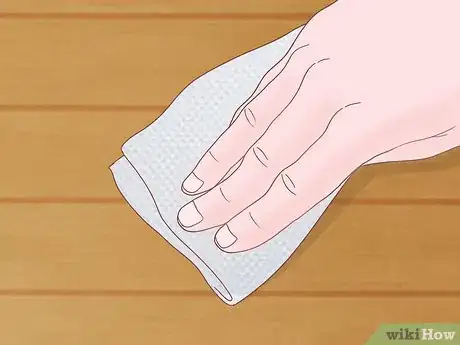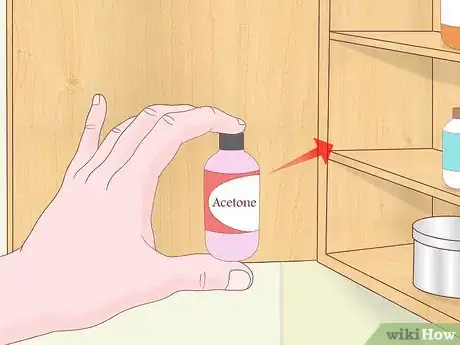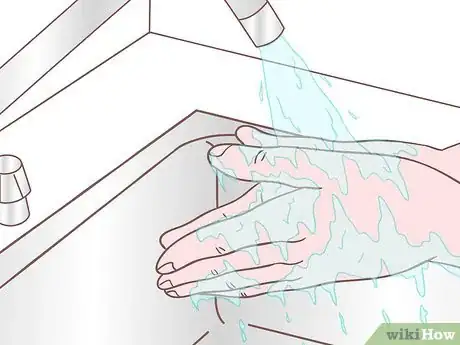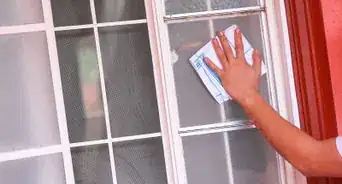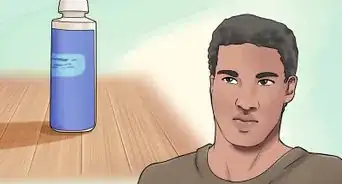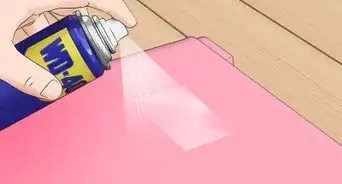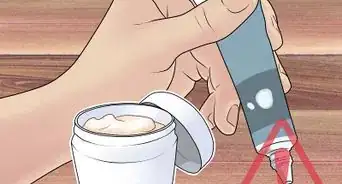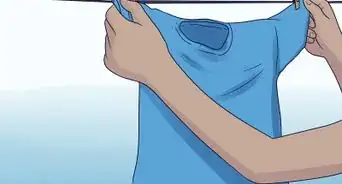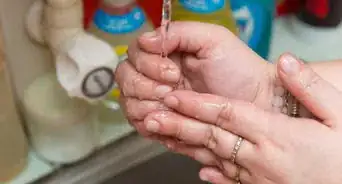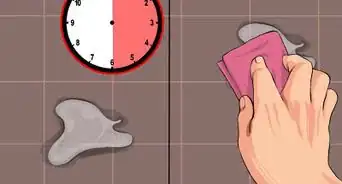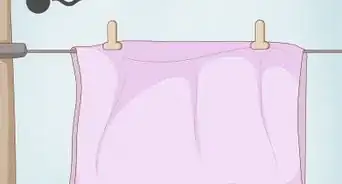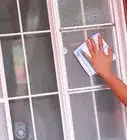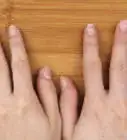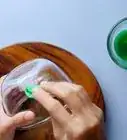This article was co-authored by Gino Colucci. Gino Colucci is a Home Improvement Specialist and the Owner of Crackerjacks Handyman Services (not a licensed contractor) in Chandler, Arizona. Crackerjacks Handyman Services offers an effective cost-saving solution for commercial and residential repair and maintenance needs, specializing in smaller projects. Crackerjacks Handyman Services carries liability insurance and all technicians go through a background check.
This article has been viewed 155,621 times.
You know how sensitive your laminate flooring is, and you take good care of it. You never clean it with wax, oil, soaps, detergents or anything else that could ruin it.[1] Unfortunately, your kids are too busy fixing their model airplane to realize they’ve squirted superglue all over your beautiful floor. Luckily, superglue does have one weakness: acetone.
Steps
Getting Supplies
-
1Get acetone or nail polish remover. You can buy concentrated acetone from your local hardware store.[2] It usually comes in a 1 US gal (3.8 L) can. You can also find acetone in your beauty cabinet. Acetone is the main ingredient in most nail polish removers.
- Never keep your acetone in a styrofoam or plastic cup. It will dissolve the cup.
- If you use nail polish remover, make sure it does indeed have acetone. Some companies are trying to use other substances as acetone weakens the bonds for acrylic nails.
-
2Get a knife. The softer the knife the better. You want a knife that will not leave marks on your flooring. A soft, plastic putty knife will work best. Laminate flooring can be easily scratched by metallic knives.
- If you can’t find a plastic putty knife, you can use a butter knife but you will have to wrap it with a soft rag before using it on your laminate flooring.
Advertisement -
3Get paper towels or cleaning cloths. Laminate flooring is very sensitive to liquid. You’ll want plenty of dry paper towels or cloths on hand to wipe up any moisture off your floor before it causes any discoloration.
- Darker color laminate is more prone to discoloration.
-
4Get a thick, clean rag. You never want to use a scouring pad on your laminate flooring or anything else that can leave scratches. You can use your soft rag to clean your floor without damaging it.
- You may also need another rag to wrap around your butter knife if you choose to use one.
Removing the Glue
-
1Crack a window to increase the ventilation.[3] While acetone is safe to use, overexposure to it can be bad for you. Too much inhalation of acetone can irritate your respiratory tract, cause headaches and in serious cases even make you go unconscious.[4]
- Overexposure of concentrated acetone to the skin can even cause dermatitis, so be careful.
- Acetone can also stain fabrics in your clothes, so roll up your sleeves.
-
2Spot-test the acetone. Find a small hidden area on your laminate flooring where guests will not normally see. Place a small dot of acetone on the spot. Wait for it to dry, then check the spot to make sure there is no discoloration. You want to make sure the acetone will not damage your flooring.[5]
- Choose a spot somewhere that is not likely to be exposed when you inevitably move your furniture around. A corner of the room may be best.
-
3Put some acetone on the superglue. When you’re sure the acetone is safe to use on your flooring, apply the acetone to your cleaning rag and work the rag into the stain. Give the acetone some time to soften the glue.
- If you have a small stain, apply acetone to a cotton swab and rub it over the stain until the glue is softened.
-
4Scrape away the glue. Use your putty knife to gently scrape away the glue stain. If you’re using a steel butter knife, remember to wrap it in your clean thick rag before you use it on your floor.
- Be gentle and take your time. Keep the edge of your scraper even with the floor to prevent scratches. With enough force, even a soft knife can cause damage to your flooring.[6]
-
5Repeat the process. It may take a few tries to get all the glue off. Keep pouring drops of acetone on the stain, letting it sit and then scraping away with your knife until your flooring is free of superglue.
Finishing the Job
-
1Test the area. Drag a paper towel across the area where the stain was to see if you can feel any hard places where there might still be glue. Check the area around the initial stain as well. Your knife could have smeared the glue into a larger area.
-
2Remove any remaining particles. If you do find tiny remnants of superglue on your floor, rub more acetone over the spot with your rag. Once again, use only a few drops of acetone and be sure to be gentle.[7]
- Never apply any liquid directly to your laminate flooring. It could discolor it. Instead, put a few drops of acetone on your rag, then apply your rag to the floor.
- Make sure to apply the rag to your floor in a soft, circular motion.
-
3Dry the area. When you are confident all the superglue has been removed, use a paper towel or dry rag to wipe away all the residue. Make sure that all moisture is removed from your flooring.
- Dry the area carefully so that you do not scratch your floor.
-
4Put your acetone away properly. Acetone is extremely flammable and can ignite from a distance. Keep it in an area far away from any electrical outlets or anything else that could cause it to catch fire.[8]
- Make sure to have a tight fitting lid on your acetone so that it is not exposed to anything that could cause it to catch fire.
-
5Wash your hands. Acetone can irritate your skin, causing it to become red and dried out. Be sure to scrub it all off with soap and water after you’re done working with it. Use plenty of lotion to combat the dryness it can cause as well.
Expert Q&A
-
QuestionHow can I get glue off of my baseboards?
 Michelle Driscoll, MPHMichelle Driscoll is the Owner of Mulberry Maids, which is based in Fort Collins, Colorado. With five years of experience, her business specializes in cleaning homes and small offices. She holds a Masters in Public Health from the Colorado School of Public Health. Additionally, Mulberry Maids has an A+ rating from the Better Business Bureau.
Michelle Driscoll, MPHMichelle Driscoll is the Owner of Mulberry Maids, which is based in Fort Collins, Colorado. With five years of experience, her business specializes in cleaning homes and small offices. She holds a Masters in Public Health from the Colorado School of Public Health. Additionally, Mulberry Maids has an A+ rating from the Better Business Bureau.
Founder, Mulberry Maids If you accidentally got super glue on your baseboards, acetone is a powerful adhesive remover. First, apply the acetone to your rag and apply the rag to the baseboards. However, acetone is quite strong, so you must be prepared to touch up your baseboards after your stain removal. Therefore, it is recommended to have touch up baseboard paint on hand, if needed.
If you accidentally got super glue on your baseboards, acetone is a powerful adhesive remover. First, apply the acetone to your rag and apply the rag to the baseboards. However, acetone is quite strong, so you must be prepared to touch up your baseboards after your stain removal. Therefore, it is recommended to have touch up baseboard paint on hand, if needed. -
QuestionNail polish remover is leaving a white patch on the floor?
 Michelle Driscoll, MPHMichelle Driscoll is the Owner of Mulberry Maids, which is based in Fort Collins, Colorado. With five years of experience, her business specializes in cleaning homes and small offices. She holds a Masters in Public Health from the Colorado School of Public Health. Additionally, Mulberry Maids has an A+ rating from the Better Business Bureau.
Michelle Driscoll, MPHMichelle Driscoll is the Owner of Mulberry Maids, which is based in Fort Collins, Colorado. With five years of experience, her business specializes in cleaning homes and small offices. She holds a Masters in Public Health from the Colorado School of Public Health. Additionally, Mulberry Maids has an A+ rating from the Better Business Bureau.
Founder, Mulberry Maids Acetone in the nail polish remover can sometimes eat away at your floor's finish, unfortunately. You can first try to use a Magic Eraser or Bar Keeper's Friend to see if that helps soften the white patches at all. If not, you may need to talk to a professional about re-finishing the specific type of flooring that you are working with. Some floors can be sanded and re-stained or re-waxed, but not all floor types can be refinished that way.
Acetone in the nail polish remover can sometimes eat away at your floor's finish, unfortunately. You can first try to use a Magic Eraser or Bar Keeper's Friend to see if that helps soften the white patches at all. If not, you may need to talk to a professional about re-finishing the specific type of flooring that you are working with. Some floors can be sanded and re-stained or re-waxed, but not all floor types can be refinished that way. -
QuestionHow to get super glue off a Formica counter?
 Community AnswerThe same methods as for laminate flooring, they are practically the same material, white spirit, lighter fluid, or WD-40.
Community AnswerThe same methods as for laminate flooring, they are practically the same material, white spirit, lighter fluid, or WD-40.
Warnings
- Never apply acetone or any liquid directly to laminate flooring.⧼thumbs_response⧽
- If you experience severe acetone poisoning that doesn’t decrease after a few hours, call The American Association of Poison Control Centers at 1 (800) 222-1222⧼thumbs_response⧽
References
- ↑ https://www.mohawkflooring.com/flooring/laminate/guides/laminate-care-maintenance
- ↑ Gino Colucci. Home Improvement Specialist. Expert Interview. 14 January 2021.
- ↑ Gino Colucci. Home Improvement Specialist. Expert Interview. 14 January 2021.
- ↑ http://www2.lbl.gov/ehs/ssa/assets/docs/cssa/Const%20Safety%20Startup%20Kit%202010/06-Construction%20Tool%20Box%20Safety%20Topics/Acetone%20Use%20and%20Care.doc
- ↑ Gino Colucci. Home Improvement Specialist. Expert Interview. 14 January 2021.
- ↑ http://bobvila.com/articles/how-to-clean-laminate-floors/#.VvJJmUU8KnM
- ↑ http://www.supergluecorp.com/?q=removingsuperglue.html
- ↑ http://www.msdsonline.com/blog/msds-chemical-management/2013/06/18/acetone-the-hidden-hazard
